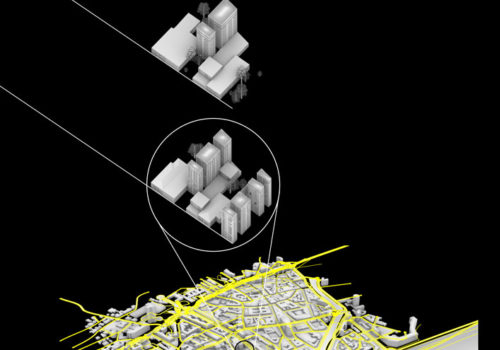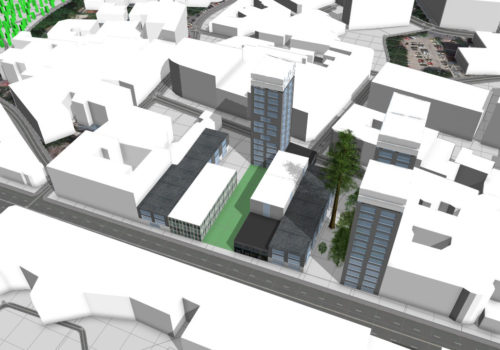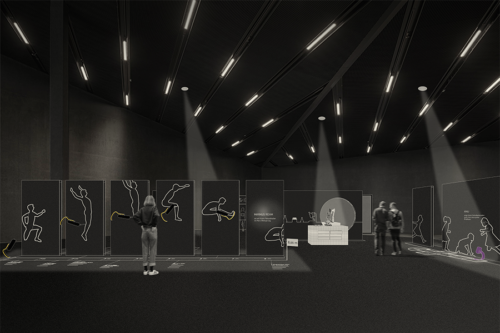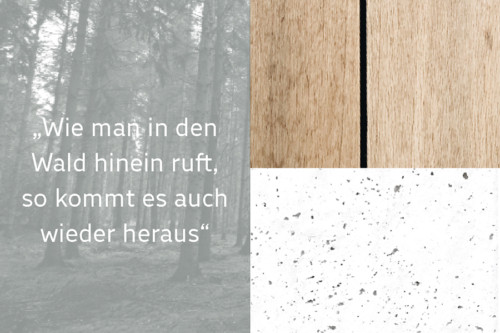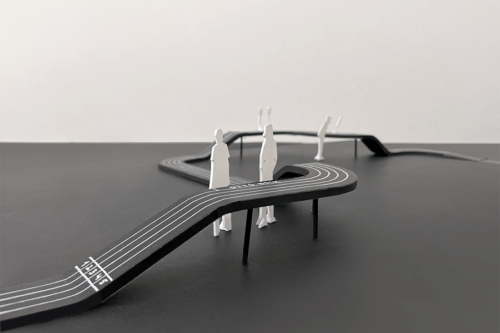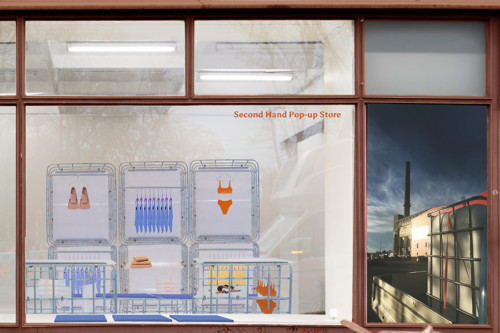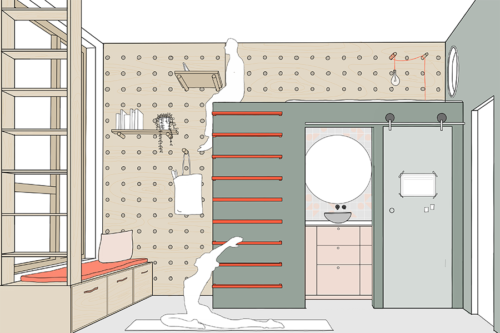Stipendiaten-Blog: Anca Badut
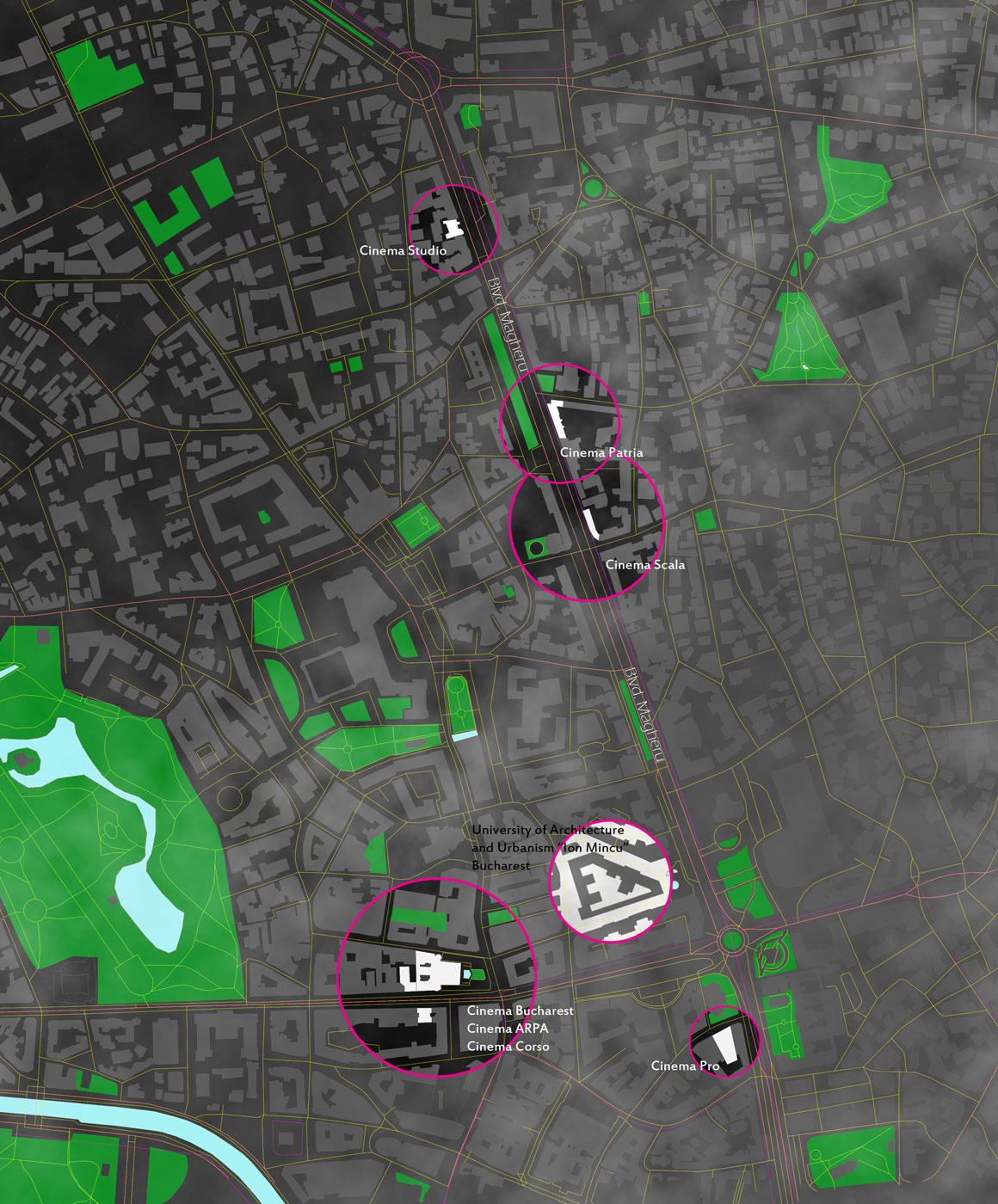
“Parametric Architecture and Urbanism in the Revival of Cinemas”, Boulevard Magheru in Bucharest
- CityEngine Variations: Boulevard Elisabeta in Bucharest
- Tests with parameter-based software CityEngine
Games, VR and Urban Design
“If science and technology march under the banner EVERYTHING IS POSSIBLE, design culture must know how to point out a path for these potential possibilities, a path that can be completely opposed to that which technological-scientific development has followed up till now”.
– Ezio Manzini
Recently I’ve spent quite some time searching for innovative ways to engage communities through participatory technologies to generate an influential number of iterations and find the best urban design proposal for large spaces. There are two elements that have proved to be part of the design process in case of large-scale projects: the buzzword of the 21st century, INFORMATION and the dynamic required way of thinking, CHANGE OVER TIME.
The abstraction of design is the name-of-the-game for an information-based approach. It requires the use of potential relationships among elements as they exist in a given context and the use of participatory design.
Among immersive developing technologies that can be used in order to redefine the way in which a city is shaped, games have already proved their potential in engaging communities to express their needs and to help translate these into designs. Such an example is the BLOCK-by-BLOCK project by UN-habitat: Minecraft video game used to design public space in more than 25 developing cities, 2017. More on this can be found online.
Now, on using the relationship between elements in a given context, getting to understand the constraints of a space and work with them at a fundamental level, I can pretty much immediately think about working with data. This is where parameter-based softwares are of great help. In the case of a 3D design proposal with a large number of possible iterations that can be then visualized through immersive media such as VR, a powerful fast software is of great help to specialists. The one such software that I had the opportunity to use is ESRI’s CityEngine. To get a grip of the potential of CityEngine I’m just going to mention that it has been fairly used in the film industry in famous studios such as DISNEY, SCANLINE VFX and FRAMESTORE and recently used in the “Blade Runner 2049” movie to generate procedural urbanscapes.
The here attached examples are some of my tests done with CityEngine during a workshop here in Bucharest, taught by Nicolai Steino, prof. at Aalborg Universitat. The fairly simple concept that I explored was the possibility of generally keeping the parametric process of dividing a terrain when designing the facades of the proposed buildings too. This was done starting from a simple terrain that we wanted to explore in Bucharest, but the potential of the approach can be further explored at larger-scales. I am now collaborating with prof. Nicolai Steino and prof. Bogdan Tofan (UAUIM) on a new project, Parametric Architecture and Urbanism in the Revival of Cinemas along a large boulevard in Bucharest (please see the attached map). It is now that we are also considering to create together a workshop on this topic, where I’ll play the role of a Teaching Assistant. If everything is going according to plan, this workshop will happen on 21st-24th of May at the University of Architecture and Urbanism “Ion Mincu” Bucharest. With this occasion I am looking forward to further test the VR experience with CityEngine and Unreal (games engine), which can then further be developed to help participatory design for affected communities around the world. On this matter I have also recently applied to the OPEN CALL on “How can specific new uses of technology and design enable meaningful, fast and sustainable development of urban informal settlements?” organized by Norman Foster Foundation.
Looking forward to all of these searches growing in a way in which to help sustain the revival of architecture and the resiliency of cities.
“In the end, our society will be defined not only by what we create, but by what we refuse to destroy” – John Sawhill
Anca
Badut
